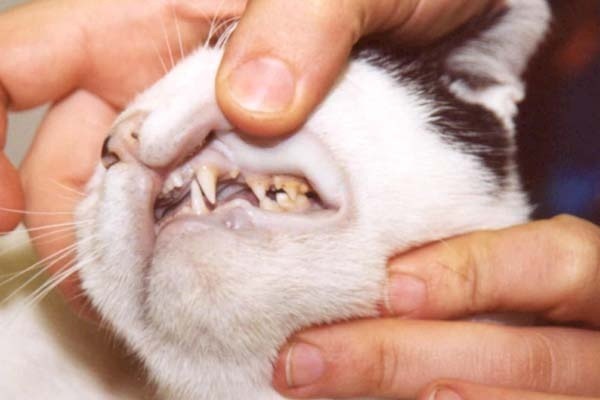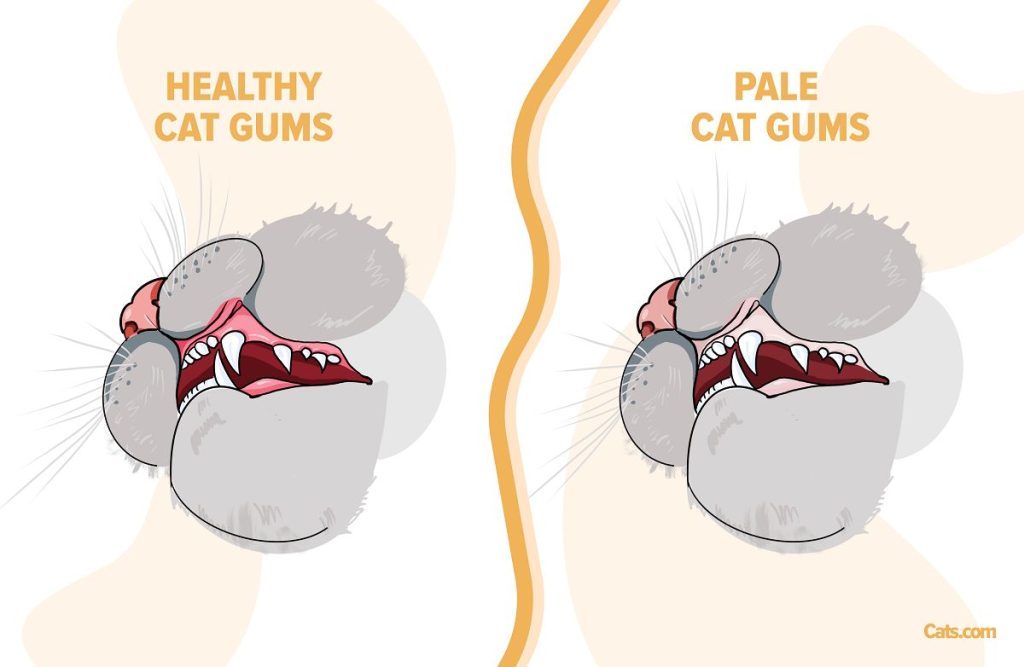If your cat’s gums are white, it may indicate a serious health issue that requires immediate veterinary attention. Pale or white gums in cats could be a sign of anemia, dehydration, shock, or a circulation problem.
It is crucial to seek professional help to determine the underlying cause and provide appropriate treatment. Ignoring this symptom can lead to further complications and jeopardize your cat’s well-being. Don’t delay in getting your cat the care it needs to ensure a healthy and happy life.
Understanding The Health Implications Of White Gums In Cats
An overview of the importance of gum color in cats:
White gums in cats can indicate various health concerns and should not be ignored. Monitoring the color of your cat’s gums is crucial in maintaining their well-being.
| Cause | Explanation |
|---|---|
| Anemia | Reduced red blood cells affecting blood circulation. |
| Shock | Severe drop in blood pressure due to injury or trauma. |
| Dehydration | Inadequate fluid intake leading to low blood volume. |
| Internal bleeding | Blood loss within the body due to certain diseases. |
| Feline Infectious Peritonitis (FIP) | A viral infection that can cause multiple symptoms. |
White gums in cats could be a sign of serious underlying issues, and it is important to consult a veterinarian promptly if you notice this symptom. Early identification and treatment of the underlying cause can significantly increase the chances of a positive outcome.
Identifying Symptoms Associated With White Gums In Cats
Identifying Symptoms Associated with White Gums in Cats
Recognizing signs of white gums in cats is crucial in determining their overall health. Pale or white gums may indicate an underlying issue that requires immediate attention. It is essential to monitor for additional symptoms, which often accompany this condition. If your cat has white gums, it may also display behaviors such as lethargy, loss of appetite, or unusually heavy panting. These symptoms can indicate various health problems, including anemia, shock, liver disease, or kidney failure.
Keep an eye out for other signs such as diarrhea, vomiting, or difficulty breathing, as these could provide further clues to the underlying cause. If you notice any of these symptoms, it is recommended that you seek veterinary assistance promptly. Remember, timely identification and treatment can help ensure your cat’s well-being and increase the chances of a positive outcome.
Underlying Medical Conditions That Cause White Gums In Cats
Dental problems can significantly impact the color of a cat’s gums. Inflamed gums, also known as gingivitis, may appear white in some instances. Plaque buildup, tartar formation, and periodontal disease can contribute to this condition. It is essential to provide regular dental care to cats to prevent such issues.
Anemia can also cause a cat’s gums to turn white. It is a condition characterized by a low red blood cell count, affecting the oxygen-carrying capacity of the blood. Cats with anemia may exhibit pale gums, lethargy, and reduced appetite. Consulting a veterinarian is crucial to diagnose and treat anemia effectively.
Infections and inflammatory diseases can affect the color of a cat’s gums too. Conditions such as stomatitis, oral ulcers, or certain viral infections can lead to gum discoloration. These underlying medical issues should be addressed promptly to ensure the health and well-being of the cat.
| Gum Condition | Possible Causes |
|---|---|
| Gingivitis | Plaque buildup, tartar formation, periodontal disease |
| Anemia | Low red blood cell count |
| Infections and Inflammatory Diseases | Stomatitis, oral ulcers, viral infections |
Seeking Veterinary Care For Cats With White Gums
When cats have white gums, it is crucial to seek veterinary care immediately. White gums can be a sign of a serious underlying health issue, such as anemia, infection, or organ dysfunction. Consulting a veterinarian is important because they have the expertise to diagnose and treat the condition effectively. The veterinarian will conduct diagnostic tests and examinations to determine the cause of the white gums. These tests may include blood work, urine analysis, imaging studies, and physical examinations. Through these evaluations, the veterinarian can identify the root cause and provide appropriate treatment options. It is vital not to delay seeking veterinary care, as white gums can indicate a potentially life-threatening condition. Remember, your cat’s health is in your hands, so immediate professional help is necessary to ensure their well-being.
Treatment Options For Cats With White Gums
Dental care and oral hygiene practices to promote gum health:
- Regular brushing using cat-specific toothpaste and toothbrush
- Providing appropriate chew toys to encourage natural teeth cleaning
- Scheduling professional dental cleanings and examinations with a veterinarian
- Feeding a well-balanced diet that supports oral health
- Ensuring access to fresh water at all times
- Monitoring for signs of gum disease, such as bad breath or swollen gums
- Addressing any underlying health issues that may contribute to gum problems, such as diabetes or kidney disease
Medications and interventions for specific medical conditions causing white gums:
| Medical Condition | Treatment Options |
|---|---|
| Gingivitis or Periodontal disease | Antibiotics, professional teeth cleaning, oral rinses |
| Anemia or low red blood cell count | Supplements, blood transfusions, addressing underlying cause |
| Oral trauma or injury | Wound care, pain management, possible surgery |
It is essential to prioritize proper oral hygiene practices to prevent and address white gums in cats. Regular dental care and monitoring for any changes in gum color or health are crucial in maintaining overall feline well-being.

Credit: www.vetwest.com.au
Preventive Measures To Keep Cat Gums Healthy
White gums in cats can be a sign of various underlying health issues. To prevent this condition and keep your cat’s gums healthy, it’s important to focus on diet and nutrition, as well as regular dental check-ups and maintenance.

When it comes to diet and nutrition, feeding your cat a well-balanced diet is crucial. Ensure that their food contains essential nutrients, such as vitamins A, C, and E, which promote gum health. Avoid feeding them excessive amounts of soft or sticky foods, as these can contribute to plaque buildup and gum disease.
Regular dental check-ups and maintenance are also essential. Brushing your cat’s teeth regularly can help remove plaque and prevent gum disease. Additionally, providing them with dental treats or toys specifically designed to promote oral health can be beneficial.
If you notice any abnormalities, such as white gums or bad breath, it’s important to seek veterinary attention promptly. Your veterinarian can perform a thorough examination and provide appropriate treatment options to ensure your cat’s gum health is maintained.
Conclusion
To sum it up, if you notice your cat’s gums turning white, it could be a sign of an underlying health issue that needs attention. White gums may indicate anemia, oral infections, kidney disease, or liver problems. It’s important to consult a veterinarian to determine the cause and provide proper treatment.
Remember, monitoring your cat’s gum health is a vital part of maintaining their overall well-being. Stay proactive and ensure your furry friend gets the care they need for a healthy and happy life.


